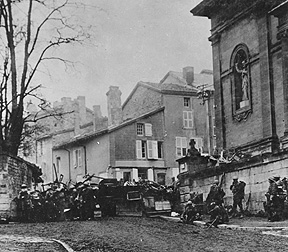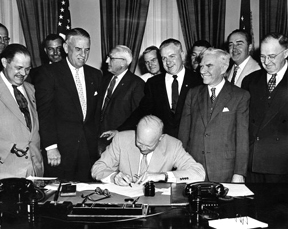The History of Veterans Day
Veterans Day (originally known as Armistice Day) is a federal holiday in the United States observed annually on November 11th and honors military veterans. Why was this date chosen, and what is the history behind this special day? Continue reading to find out.
Armistice Day

World War I officially ended on June 28, 1919, when the Treaty of Versailles was signed. However, it is important to note that the fighting stopped seven months earlier when an armistice, or temporary cessation of hostilities, between the Allied nations and Germany went into effect on the eleventh hour of the eleventh day of the eleventh month. Therefore, November 11th, 1918, is generally regarded as the end of “the war to end all wars.”
In November 1919, President Wilson declared November 11th as the first commemoration of Armistice Day with the following words:
“To us in America, the reflections of Armistice Day will be filled with solemn pride in the heroism of those who died in the country’s service and with gratitude for the victory, both because of the thing from which it has freed us and because of the opportunity it has given America to show her sympathy with peace and justice in the councils of the nations…”
The original concept was for a day celebrated with parades and public gatherings and a brief suspension of business beginning at 11:00 a.m. An Act approved May 13, 1938, made the 11th of November of each year a legal holiday and was known as “Armistice Day.”
The Evolution of Veterans Day
Armistice Day was primarily a day set aside to honor veterans of World War I, but in 1954, after World War II and the Korean War, the 83rd Congress, at the urging of the veterans service organizations, amended the Act of 1938 by striking out the word “Armistice” and inserting in its place the word “Veterans.” With the approval of this legislation (Public Law 380) on June 1, 1954, November 11th became a day to honor American veterans of all wars.
Later that same year, on October 8th, President Dwight D. Eisenhower issued the first “Veterans Day Proclamation” which stated:
“In order to insure proper and widespread observance of this anniversary, all veterans, all veterans’ organizations, and the entire citizenry will wish to join hands in the common purpose. Toward this end, I am designating the Administrator of Veterans’ Affairs as Chairman of a Veterans Day National Committee, which shall include such other persons as the Chairman may select, and which will coordinate at the national level necessary planning for the observance. I am also requesting the heads of all departments and agencies of the Executive branch of the Government to assist the National Committee in every way possible.”
The Uniform Holiday Bill
Did you know that Veterans Day was celebrated in October for a brief moment in time? The Uniform Holiday Bill was signed on June 28, 1968, and was intended to ensure three-day weekends for Federal employees by celebrating four national holidays on Mondays: Washington’s Birthday, Memorial Day, Veterans Day, and Columbus Day. It was thought that these extended weekends would encourage travel and recreational spending.
The first Veterans Day under the new law was observed on October 25, 1971 with much confusion. It was obvious that the commemoration of this day was a matter of historic and patriotic significance to a great number of citizens, and so on September 20th, 1975, President Gerald R. Ford signed Public Law 94-97, which returned the annual observance of Veterans Day to its original date of November 11th, beginning in 1978.
Veterans Day continues to be observed on November 11th, regardless of what day of the week on which it falls. The restoration of the observance of Veterans Day to November 11th not only preserves the historical significance of the date, but helps focus attention on the important purpose of celebrating America’s veterans for their patriotism, love of country, and willingness to serve and sacrifice for the common good.
Did you enjoy this content? If so, please consider giving a gift to the ASOM to help us continue our mission of educating the public on the histories of Airborne and Special Operations Soldiers.




